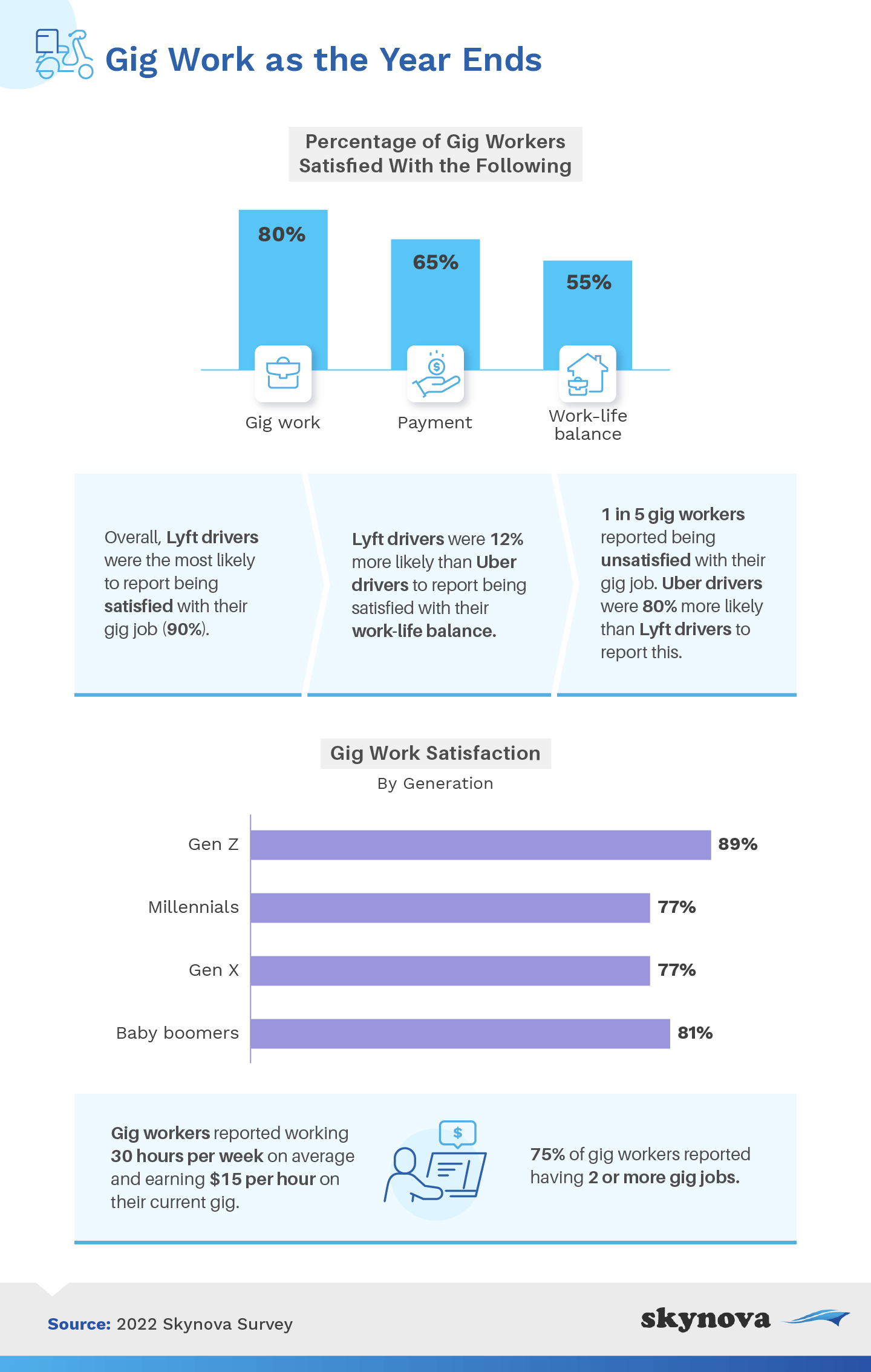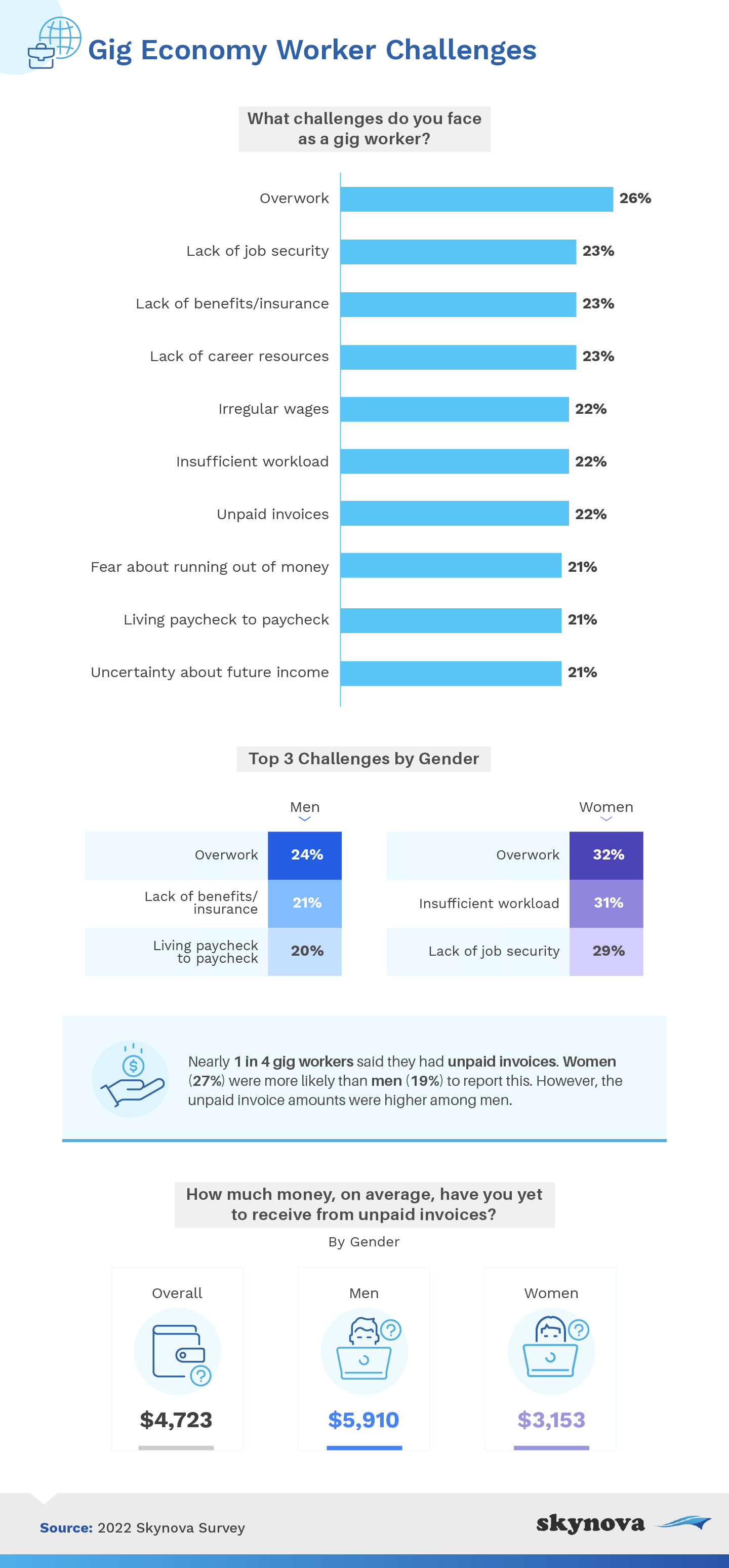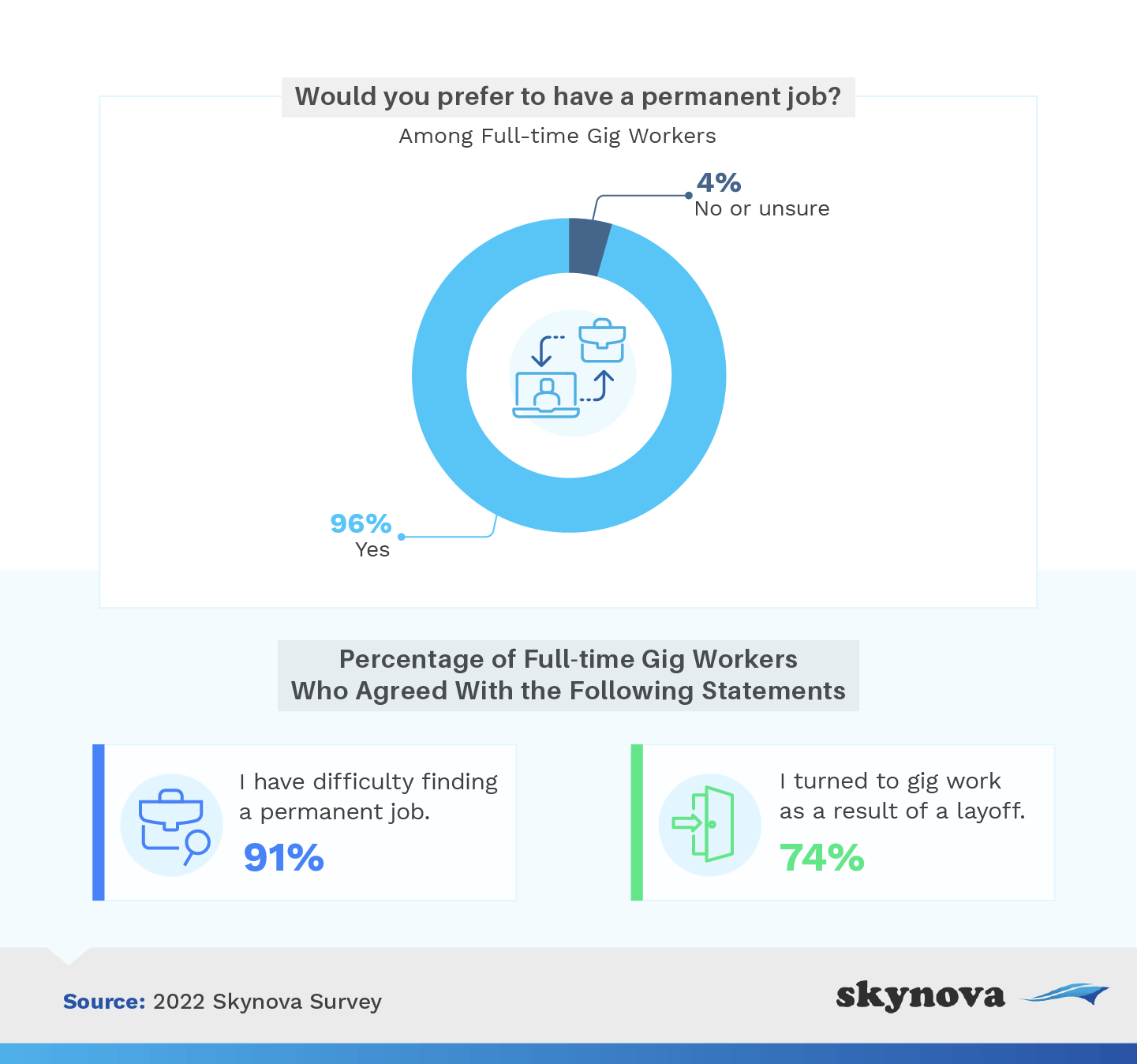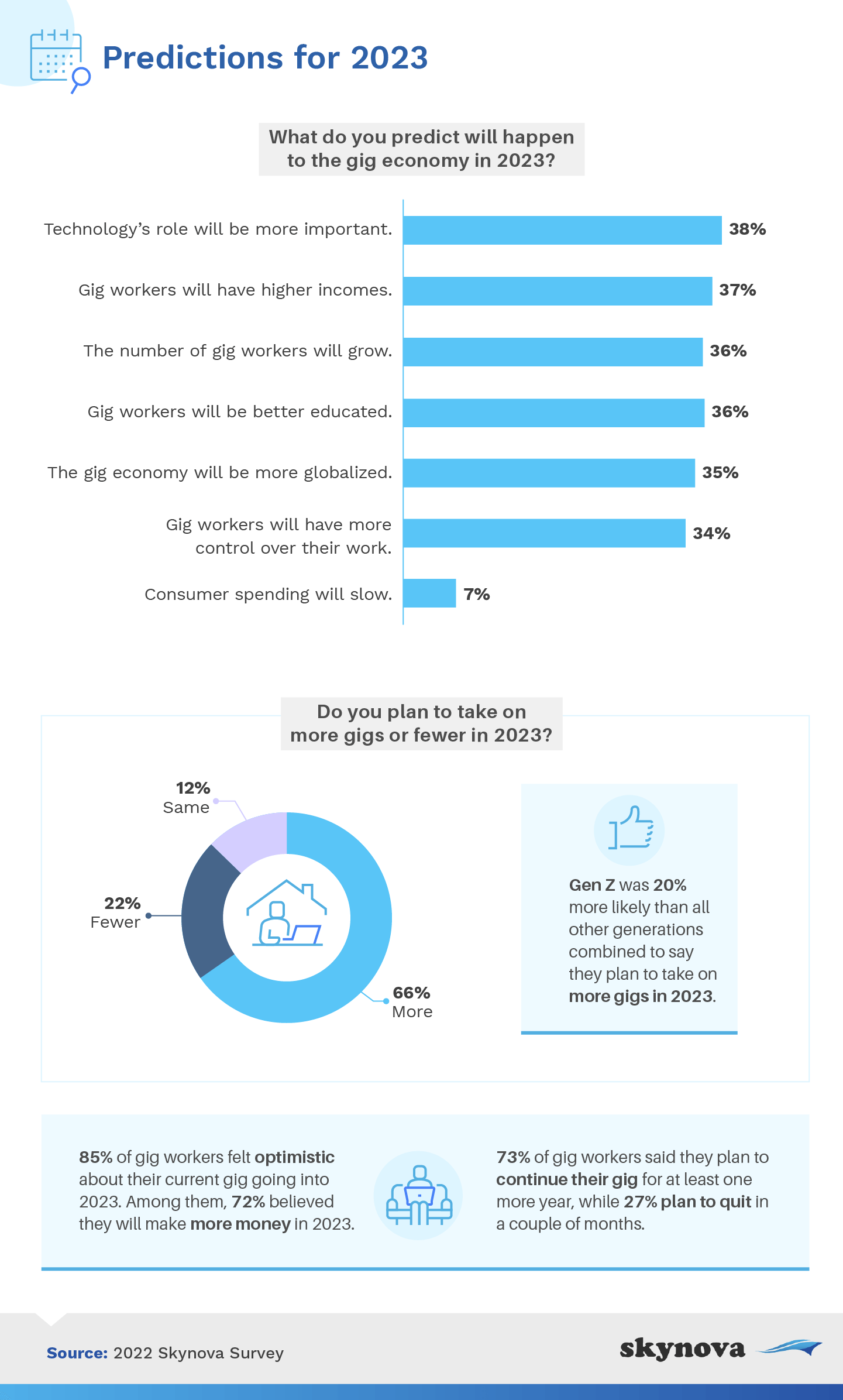
|
The gig economy has forever changed how people work. Gone are the days when the only way to take home a paycheck was to report to a supervisor at a job where workers had to clock in and clock out based on someone else's schedule. Today, they can take employment into their own hands and enjoy more control and flexibility.
To learn more about the current state of the gig economy and what it might look like in the coming year, we surveyed over 1,000 gig workers about how much they're working and earning, as well as their anticipations going into 2023. Read on to learn more about what the gig economy looks like today and how it might change.
Below you'll see our survey results detailing how satisfied gig workers are with their work and compensation. First, we'll break down these findings and consider what they could mean for the gig economy both now and in the future.

As the year draws to a close, most gig workers reported being satisfied with their compensation and the type of work they've been doing. Of those who were content with their gig work, 85% were men and 72% were women. Respondents spent an average of 30 hours per week doing gig work, earning an average of $15 per hour.
However, more gig workers were satisfied with the work they've been doing (80%) compared to how much they've been making (65%). Respondents' lines of work might explain this gap; some might be making far less than minimum wage, especially drivers. Many of the drivers we surveyed worked for Lyft and Uber, but the Lyft drivers were far more satisfied with their work.
In fact, Uber drivers were 80% more likely than Lyft drivers to report being unsatisfied with their jobs. Uber Eats drivers, in particular, were more likely to report being unhappy with their pay than those working any other gigs (48%). Meanwhile, being unsatisfied with pay was only reported by just over one-third of gig workers overall (35%).
While there are many benefits to working in the gig economy, it also has its challenges. Here are some of the issues that gig economy workers often face.

The greatest source of frustration for the gig workers we surveyed was being overworked. That's understandable since the gig economy offers endless opportunities to take on more work. Overwork was the top concern expressed on the survey among each gender we surveyed, but women (32%) were more likely than men (24%) to report this problem.
Other top concerns were a lack of job security, benefits (such as health insurance), and career resources. Gig workers make these trade-offs in exchange for greater job flexibility. While their clients or temporary employers don't have the same obligations that they do for full-time employees, gig workers, likewise, aren't beholden to their clients' workplace rules.
But some of the issues reported are not unique to gig workers. Living paycheck to paycheck (reported by 21% of our respondents) is a common problem even among full-time employees. Still, it was enough of an issue for our respondents to indicate that it might be more common amongst gig workers.

Aside from the flexibility that makes gig work worth the trouble, the many jobs available in the gig economy make it an attractive option for people experiencing unexpected life circumstances, such as losing a job. Nearly three-quarters of the people we surveyed (74%) said they turned to gig work due to being laid off. Although they might be more used to having a permanent job, a gig might be more accessible in the short term. Most gig workers said they'd prefer a permanent work arrangement (96%), but struggled to find it (91%).
Now that we've addressed concerns about the current state of the gig economy and what has led many to take on gigs, we'll look at where the industry could head in the coming year.

Despite the concerns we've addressed, most gig workers (85%) were optimistic about their current gigs going into 2023. Nearly three-quarters (72%) said they believe they will make more money in the coming year, and 37% said all gig economy workers overall would have higher incomes.
On the one hand, that could mean a pay raise since a large number (73%) said they plan to stick with their current gig for another year. But on the other hand, 66% also said they plan to take on more gigs in 2023 — so the increased pay could come from additional work. With so many taking on more gigs, it also stands to reason that 36% said they expect the gig economy to grow in 2023, and another 35% said they see the industry becoming more globalized.
With all this expected growth, it's a good thing there's evidence to suggest that much-needed resources may be coming to gig workers. The Department of Labor has proposed a plan to extend certain benefits to contract workers, such as Uber and Lyft drivers. The catch is that consumers may need to pay more to use these services to cover these extra costs.
The gig economy appears to be in a strong position heading into the new year. Many workers have been satisfied with their jobs and pay, even though that pay is often below average. Many of them remain committed to their current gigs, even looking to take on more of them in 2023.
It remains to be seen how an increase in gig workers will impact their satisfaction since it may mean more competition among job candidates. But an increase in freelance talent could lead businesses to lean more on gig workers, especially amid labor shortage after the Great Resignation. If those trends continue, gigs could be the work model of the future.
Skynova provides online invoicing for small businesses to help business owners get paid faster with software that simplifies and speeds up billing and invoicing.
For this campaign, we surveyed 1014 gig workers. Among them, 65% were men, and 35% were women. The generational breakdown was as follows: 25% Gen Z, 35% millennials, 25% Gen X, and 15% baby boomers.
Viewers and publishers are encouraged to share this article and any included statistics for noncommercial purposes, provided a link to this article is included.